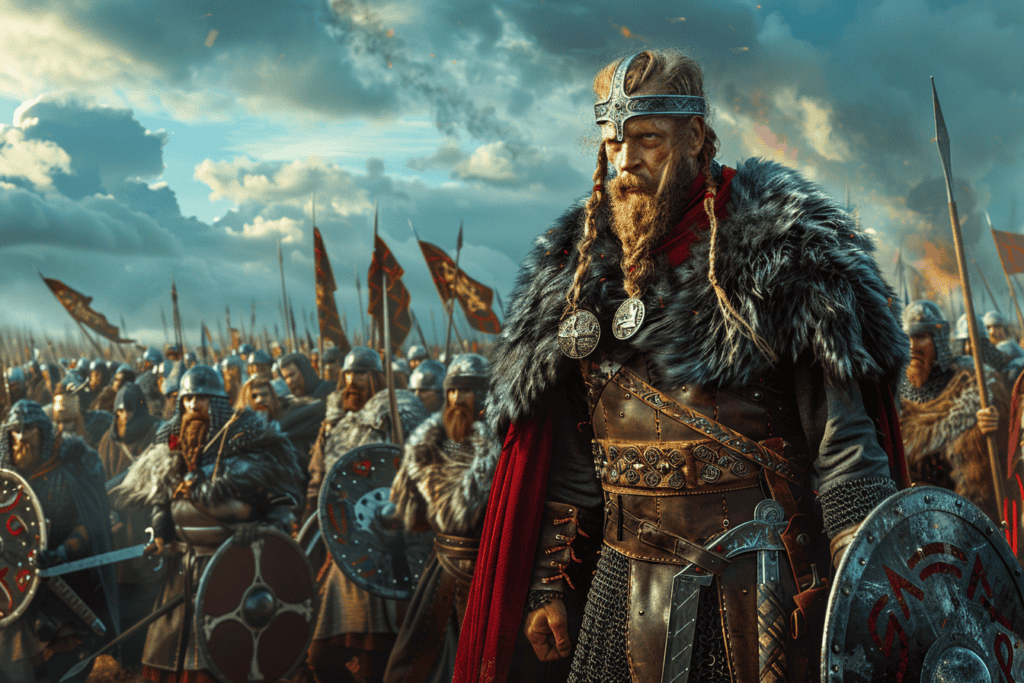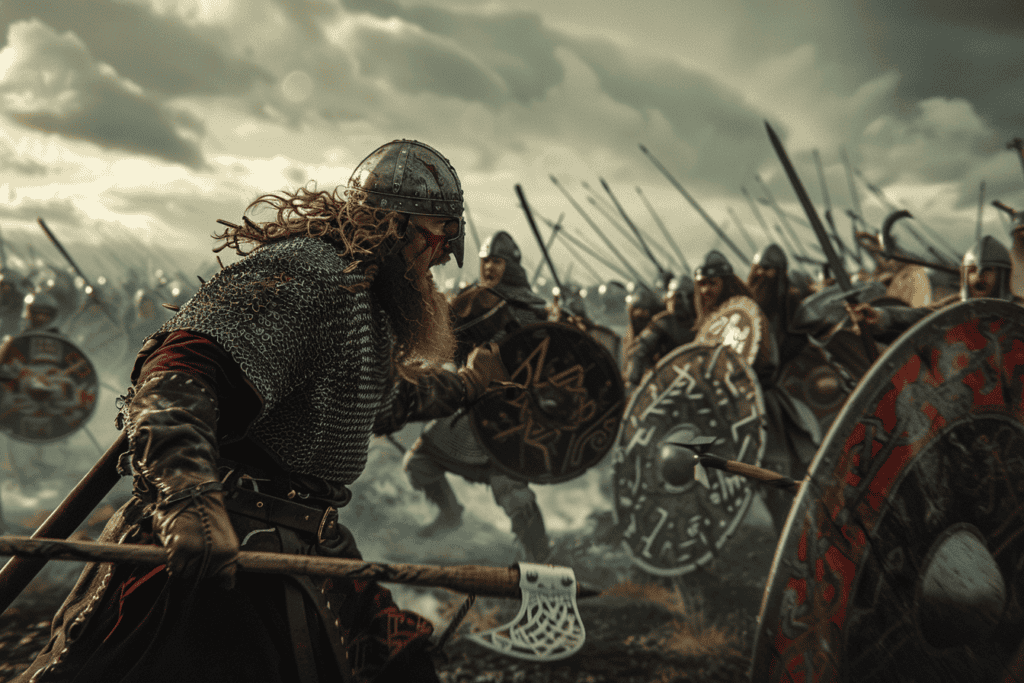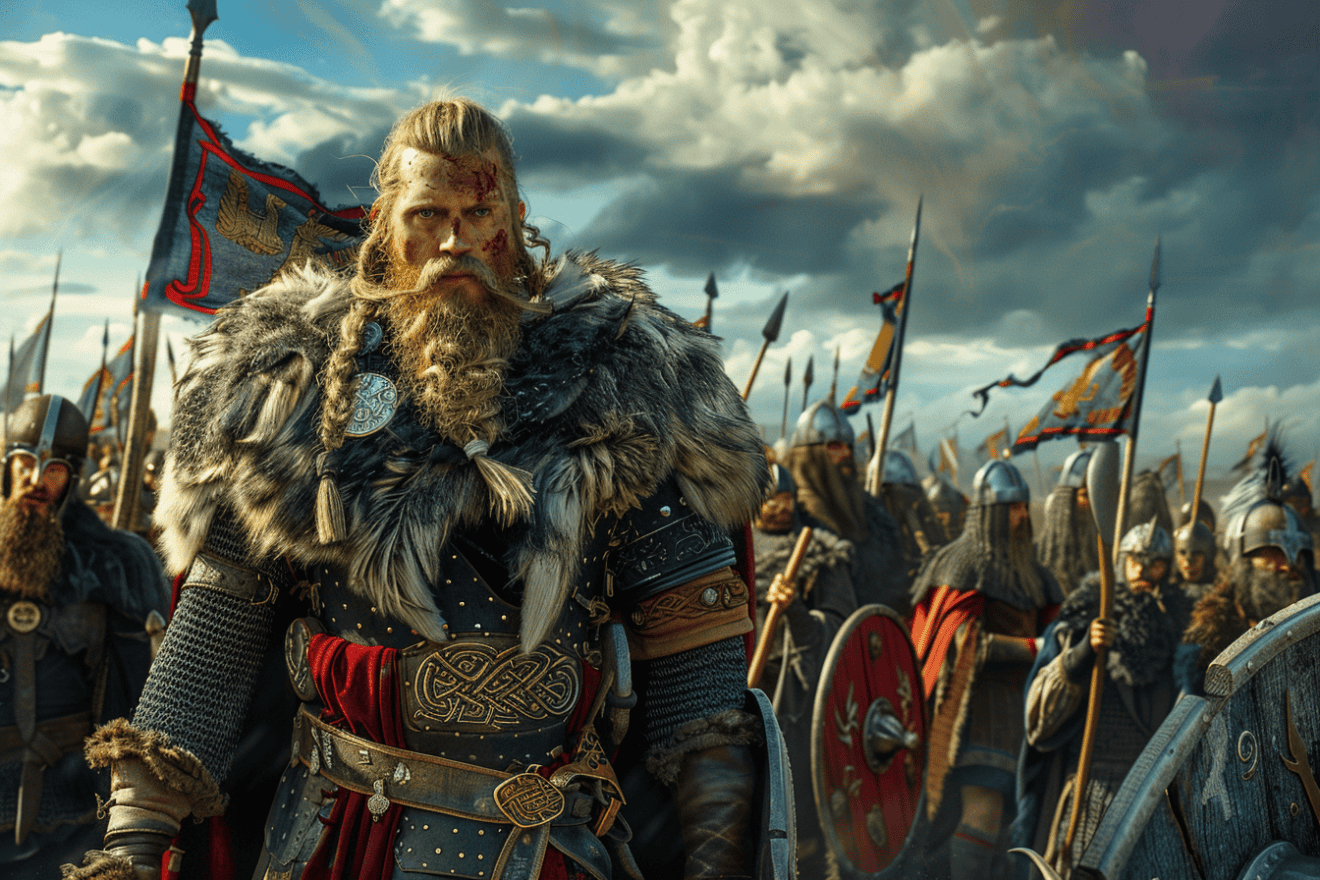Harald Bluetooth, also known as Harald Gormsson, was a Viking king who ruled Denmark from around 958 to 986 AD.
He was known for his military prowess and his ability to unite the various tribes and kingdoms of Scandinavia under his rule.
One of his most significant victories was the Battle of Fyrisvellir in 986 AD, where he defeated his rival, Eric the Victorious, and secured his position as the most powerful king in Scandinavia.

The Battle of Fyrisvellir was a turning point in Viking history, and it was a testament to Harald Bluetooth’s military genius. The battle was fought between Harald’s army and the army of Eric the Victorious, who was the king of Sweden at the time.
The two armies met on the plains of Fyrisvellir, near the modern-day city of Uppsala in Sweden. The battle was fierce and lasted for several days, but in the end, Harald emerged victorious.
Harald Bluetooth’s victory at the Battle of Fyrisvellir cemented his position as the most powerful king in Scandinavia.
He went on to rule Denmark for several more years and continued to expand his influence throughout the region.
His legacy lives on today, not only in the name of the wireless technology that bears his name but also in the history and culture of Scandinavia.
Harald Bluetooth’s Leadership

Harald Bluetooth was a genius leader who played a pivotal role in the Battle of Fyrisvellir, 986 AD. His leadership skills were evident in his strategic planning and tactical brilliance.
He was a strategic planner who knew how to leverage his resources and was able to unite the Danish tribes and forge alliances with neighboring countries.
This allowed him to amass a formidable army that was capable of taking on any opponent.
Harald Bluetooth was also a master of diplomacy. He was able to negotiate treaties and alliances that allowed him to expand his influence without resorting to violence. This helped him to conserve his resources and avoid unnecessary conflicts.
Tactical Brilliance
Along with being a great leader, he was also a tactical genius who knew how to adapt to changing circumstances. He was able to read his opponents and devise strategies that exploited their weaknesses.
This allowed him to win battles even when he was outnumbered or outgunned.
Harald Bluetooth was also a master of deception. He was able to deceive his opponents by using false signals and feints. This helped him to gain the upper hand in battle and secure victory.
The Battle of Fyrisvellir

The Battle of Fyrisvellir took place in 986 AD in the plain called Fyrisvellir, situated in modern-day Uppsala, Sweden.
The battle was fought between two factions of the Scandinavian Vikings, the forces of King Eric the Victorious and the forces of King Harald Bluetooth of Denmark. The battle was a part of a larger conflict between the two kings for control over the region.
The conflict between the two kings began when King Eric the Victorious attacked Denmark and captured the city of Hedeby. In response, King Harald Bluetooth raised an army and marched towards Sweden.
The two armies met at Fyrisvellir, where they engaged in a fierce battle that lasted for several hours.
Viking Tactics and Formation
In the Battle of Fyrisvellir, King Harald Bluetooth utilized a wedge formation, also known as a boar’s head formation, to break through the enemy lines. The wedge formation consisted of a group of soldiers forming a wedge shape with the point aimed at the enemy lines.
This formation was effective in breaking through the enemy lines and causing chaos among the enemy ranks.
In addition to the wedge formation, the Vikings also utilized a shield wall formation, where soldiers would stand shoulder to shoulder with their shields overlapping.
This formation provided a strong defense against enemy attacks and allowed the Vikings to advance towards the enemy lines.
Technological Advancements During Harald’s Reign

Harald was a master of the sword and spear, and he introduced new weapons to his army, such as the Dane axe, which was a long-handled battle axe that could be used for both chopping and thrusting.
Harald’s army also used shields that were made of wood and covered with leather or animal hide. These shields were lightweight and easy to maneuver, which gave the Viking warriors an advantage in battle.
Additionally, Harald’s army used chainmail armor, which provided protection against swords and arrows.
Shipbuilding
Harald Bluetooth was also a skilled shipbuilder, and he introduced new designs that allowed his navy to travel faster and more efficiently.
He built longships that were sleek and streamlined, with a shallow draft that allowed them to navigate shallow waters and rivers. These ships were also equipped with oars, which allowed them to travel upstream.
Harald’s ships were also designed with a keel, which gave them stability and allowed them to sail in rough seas.
Additionally, he introduced the use of sails, which allowed his navy to travel faster and with less effort. Harald’s shipbuilding innovations gave his navy a distinct advantage over other Viking fleets, and helped him to win many battles.
Legacy of Harald Bluetooth

Harald Bluetooth’s legacy is felt even today. His conversion to Christianity around 960 AD marked a significant turning point in Scandinavian history. It was not just a matter of faith, but also of politics and culture.
By embracing Christianity, Harald united Denmark and Norway under a common religion, paving the way for the eventual unification of the two countries.
In addition to his religious influence, Harald is also remembered for his contributions to the Danish language. He is credited with the creation of the runic alphabet, which was used to write Old Norse.
The runic alphabet was in use for several centuries and had a significant impact on the development of the written language in Scandinavia.
Influence on Norse Warfare
Harald Bluetooth’s military tactics were innovative and effective.
At the Battle of Fyrisvellir in 986 AD, he demonstrated his strategic genius. He used a combination of infantry, cavalry, and archers to defeat his opponents. This victory solidified his position as the ruler of Denmark and Norway.
Harald’s tactics were later adopted by other Viking leaders. His legacy can be seen in the way that Norse warfare evolved over the centuries.
His use of cavalry and archers was particularly influential. These tactics were used in battles throughout Scandinavia and beyond.
Harald Bluetooth’s cultural impact was significant. His contributions to language and religion helped to shape the course of Scandinavian history, while his military tactics had a lasting influence on Norse warfare.










Add Comment